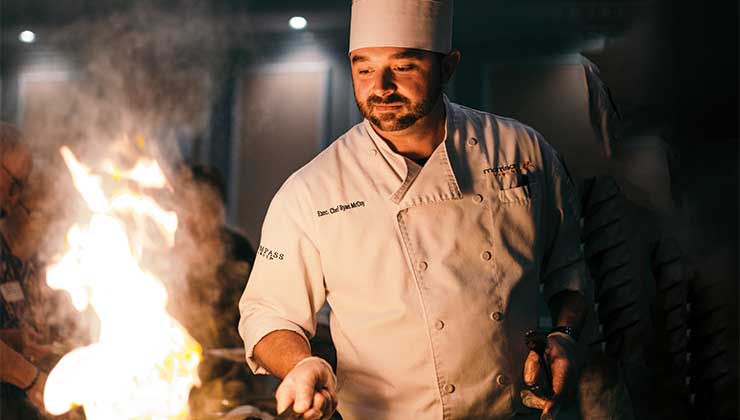
Trendsetting is Here to Stay
Foodservice is an ever-changing landscape. As new trends emerge, business practices need to change to stay ahead of the curve. It is critical to keep up with new styles, yet it can sometimes be difficult and challenging.
Morrison Community Living is constantly looking for new solutions to help quickly adjust to market changes, drive revenue and profitability, and identify ways to streamline and strengthen business processes.
We want to create a truly valuable experience, make it easy, and give residents what they want, when they want it. Our entire culinary team actively participates in trendsetting. Here are some foodservice trends they’re keeping an eye on this year.

Blockchain is transforming the food industry by improving transparency
10% of consumers have used blockchain technology thus far, but this is just the beginning of the revolution.
Blockchain will allow every single transaction in a product journey to be tracked and documented, which will improve transparency.

According to Tasting Table, The 70s and 80s will come back with regards to restaurant design in 2019.
We are seeing a shift from the sharp and clean white walls, moving more towards bolder color schemes.
Industrial-feel is losing its momentum, being replaced with the old-school vibe.

According to Nielsen, analysis reporting on global snacking trends, the snacking business grew $3.4 billion globally in 2017. Trends show
consumers refusing to trade convenience for quality as the clean label search continues.
Here in the United States, success has been found in the “snackable” fruit and vegetable category.

The food industry welcomes artificial intelligence in the form of production & delivery robots.
JLL Global Food Trends tells us that the supply of industrial robots has grown by 15% on average per year from 2016-2018.
Companies such as Orderscape are developing food ordering robots, called chatbots, who work with Alexa to bring food to consumers throughout the U.S.

We learned from Food Business News that as emerging technology and innovations are developed to transform the future of food, today’s consumer wants to be educated on these topics and involved in the food they eat.
Hershey is one of many companies that are sharing ingredient and sourcing information online to regain and maintain trust with their customers.
IBM is utilizing Blockchain as a way to transform communications with
their consumers.

The New York Times says veggies are replacing traditional flours.
Vegetable-based flours such as cauliflower and rice flour are becoming more commonly used as replacements in households throughout the U.S.
Food companies are capitalizing on the low-carb, gluten-free and plant-based trend by using alternative flour sources, such as vegetables, to replace simple carbs in their dishes.
National chains are making a cauliflower-based crust part of their standard menu. Vegetables are being used in place of pizza crusts, spaghetti noodles, rice and more.
According to Nielsen, sales of packaged cauliflower “rice,” zucchini noodles and other vegetable-based replacements for pasta and other simple carbs reached $47 million this year, with sales of cauliflower substitutes, in particular, doubling over the past year to $17 million.
 Cold Brew is Hot!
Cold Brew is Hot!
According to market intelligence firm, Studylogic, cold-brew consumptions was up by 80% in 2017. Cold-brew is quickly moving from just coffee houses to refrigerated retail aisles, restaurants and more.
As consumers become more educated about how their food and beverage choices affect their health, they are beginning to choose cold-brew coffee instead of their usual soft drink or other caffeinated beverage.
